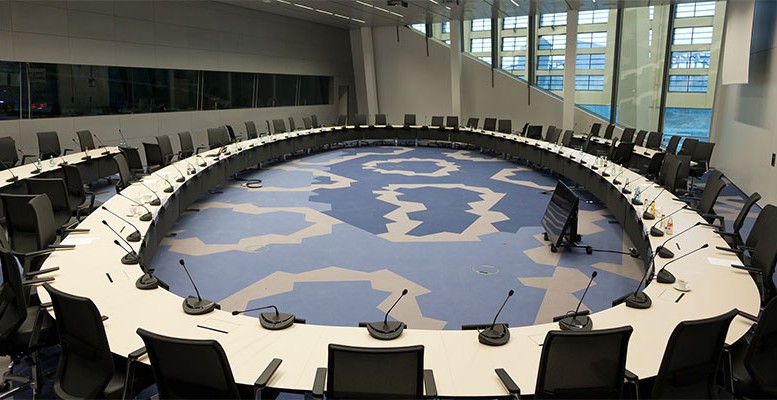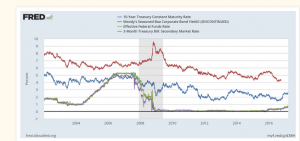I believe central banks don’t control long-term rates – which are decisive for investment – and that they can influence them in what we would call normal circumstances, namely when GDP is expanding and inflation is at its optimum level. The central bank trys to control the private market’s expectations, but it doesn’t always succeed.
In the last two years, we have had two very clear examples of when the Fed did not control long-term rates despite its attempts. The first i.s when the Fed increased the interbank rate from 1% to 5.25%, hoping to cool down the economy in 2006. To its suprise, long-term rates did not react to the rise, which shows that it was the private sector which determined them. So what happened? Well the economy was caught up in a frenetic bubble, and animal spirits were on the crest of the wave, until that bubble burst. Then the Fed had no control at all on long-term rates.
The second example is more recent: after Lehman’s crash, the Fed cut rates to zero and began to take exceptional measures – quantative expansion. It hoped to ease the rates curve by buying Treasury bonds with different maturities. But we were in a complete “Liquidity Trap,” namely that once again the private sector’s expectations, this time pessimistic, kept the real natural interest rate (the rate compatible with full employment) well below the reach and wishes of the Fed.
These two examples can be seen in the graphic. There are two long-term interest rates represented (Treasury bond and private bond), the official interest rate which the Fed does determine (the Fed Fund) and the 3-month Treasury rate, all of which are closely linked.
As you can see, the Fed did not control long-term rates as it would have liked to either in 2003-06 or in 2008-12: higher in the first period, to cool down the economy, and lower in the second, to stimulate growth and inflation.
In short, I don’t believe the central bank is the main mover as far as interest rates are concerned. In 2003-06, it couldn’t be because the private sector had gone mad and everything was a speculative frenzy. It couldn’t do it in 2008-12 either, because animal spirits were so depressed that the natural interest rate was out of the Fed’s reach.
But I don’t mean to say with all this that the central banks don’t play a key role. What I am saying is that I don’t see interest rates in Europe rising more than in the US (even if it’s just because of the major cyclical advance the US has over us) which, all other things being equal, is a reason for the dollar appreciating against the euro. I think rates are going to rise more in the US due to Trump’s expansionary fiscal policy, while in Europe we still adhere to a model of fiscal austerity and deficit reduction. So the demand for credit will be stronger there, which will push rates up, and even more so if inflation rises further. This difference in the demand for funds will result in movements of capital from Europe to the US – and the consequent rise in the dollar – until yields are equal.
As far as the FED and the ECB are concerned, the first is way ahead of the second in its “normalisation” policy (due to the fact the cycle is so advanced). In other words, the policy mix of monetary and fiscal seems to me more in favour of increasing the rate differential and benefiting the US. So I see the dollar appreciating, and thus don’t see any favourable factor for the Ibex 35, at least in the coming months. Another thing is in the long-term.






